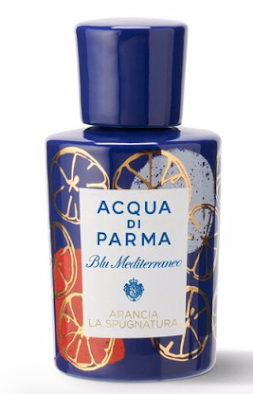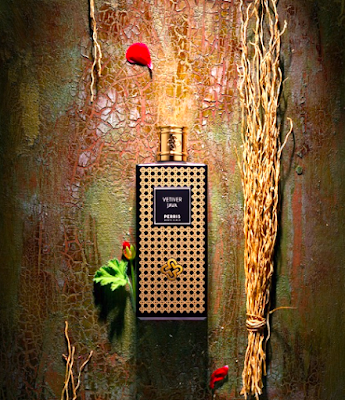Tuberose scents with Perris Monte Carlo and Adjiumi
Saturday, November 6 at the “Beauty
Concept” store in Monza, I took part to the event "Focus on
tuberose" where participants were able to sniff and discuss
dozens of raw materials and perfumes tuberose-focused.
First, our host Gian Luca Perris
(founder of Perris Monte Carlo, website here) invited us to enjoy a fantastic
tuberose absolute, that surprised many for its leathery character,
dry, salty, smoky, "bacon", which took more than twenty
minutes to show a soft and delicate floral facet, which speaks of
flowers in a shy and persuasive way. While the steam distillation collects the lighter, more volatile and fresher notes, the absolute
extracts the flower scent in its wholeness, with all its warm,
earthy, heavy basenotes. Smelling the tuberose absolute I was struck
by the fact this flower seems to work "backwards" compared
with other flowers: you generally perceive the first more gentle and
floral notes, and only after they get deeper, weightier and become
dark and indolic. Tuberous starts with darker notes, leathery,
smoky, to become gentler and floral over time.
We then explored a range of perfumes
kindly offered by the participants in Adjiumi Forum:
Piguet's Fracas (we could
compare an outstanding vintage with the modern version)
Michelle (Balenciaga)
Blonde (Versace)
Mahora (Guerlain)
Chloè
Tubereuse by L'Artisan Parfumeur, both
the first version and the renewed one.
On the table we also had Giorgio
Beverly Hills, Poison by Dior, Beautiful by E. Lauder and others...
Then we dedicated to "modern"
tuberose, including
Carnal Flower (F. Malle)
MAAI (Bogue)
L'Eau Scandaleuse (Anatole Lebreton)
the “Criminelle” by S. Lutens, Voyance by Baruti, the Animale by
Histoire de Parfums, Narcotic Venus by Nasomatto, then those of Memo,
The Cercle des Parfumeurs, Amouage, Mona di Orio and others).
The serial sniff made it clear that the
first famous perfume with tuberose (Fracas) set a standard that no
one dared to challenge for a long time: from Fracas on, tuberose
perfumes had to be sumptuously floral, sound, creamy, seductive,
narcotic. In these, tuberose is indeed associated with other flowers
like rose, neroli and other white flowers (as in Giorgio, Chloe,
Mahora), but also fruity notes (as in Tubereuse, Mahora) or metal,
aldehydic ones (Michelle), to enhance the extremely feminine
character.
Actually, smelling the absolute allows
you to grasp the essence of the flower, and in this case we
immediately realized that tuberose is much richer and multi-faceted
then it was made up to two decades ago.
And in fact, after forty years of
"feminine" tuberose a few years ago composers have started
to approach this note in a different way. Tubereuse Criminelle (1999
Lutens and Sheldrake for S. Lutens), unusually pungent and
medicine-like, and Carnal Flower (2005, Dominique Ropion for
Frederic Malle) that explores the intensely green side of this
flower, were followed by other increasingly less "domesticated"
tuberose scents, up to the wild MAAI released last year.
Modern tuberose forced us to enrich
our idea of the flower, leading it out of the "pushy
femininity" idea to include the most intensely green, smoked and
salted facets, which for many evoke the male universe. This way,
tuberose might be seen as a sort of Tao, a union of opposites that can
hold everything inside.
In any case, we must credit the
Lutens/Sheldrake and Malle/Ropion duos (authors respectively of
Tubereuse Criminelle and Carnal Flower) who first broke a pattern and
approached this flower with a different vision, inspiring
others to do the same.



Commenti